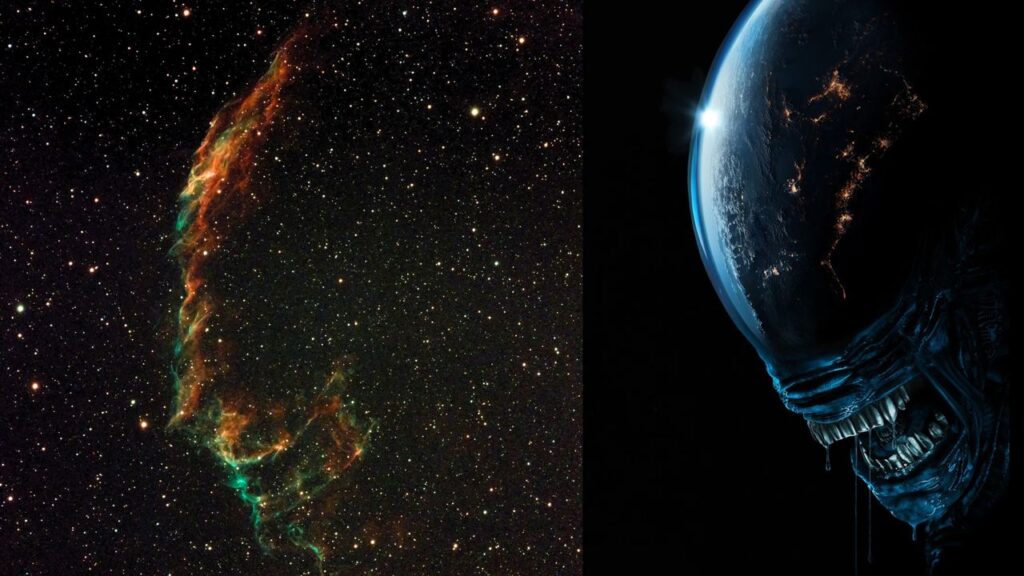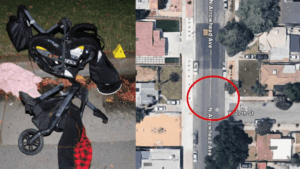
A recent astrophotography session took an unexpected turn when a stargazer aimed a Vaonis Vespera Pro smart telescope at the Eastern Veil Nebula. Instead of the anticipated cosmic beauty, the observer encountered a figure strikingly reminiscent of a Xenomorph from the iconic “Alien” franchise. The imaging sessions, conducted on August 8 and August 12, 2023, totaled approximately 1.5 hours. The resulting stacked JPEG photograph captured delicate gas tendrils that, under the right conditions, evoke the terrifying visage of the notorious sci-fi creature.
The Veil Nebula, located roughly 2,400 light-years away in the constellation Cygnus, is a part of the larger Cygnus Loop—a supernova remnant formed from a massive star explosion about 10,000 years ago, according to NASA. Specifically, the eastern section, cataloged as NGC 6992, emits vibrant arcs of ionized oxygen and hydrogen. This stunning display of stellar remnants continues to expand, illustrating the aftermath of the star’s explosive demise. By employing a dual-band filter, the observer was able to minimize light pollution and the glare from August’s full moon, which enhances the visibility of these emissions.
Unexpected Connections to Popular Culture
The uncanny resemblance of the Veil Nebula’s gas patterns to a Xenomorph comes at a timely moment, coinciding with the release of the new series “Alien: Earth.” Created by Noah Hawley, the series combines elements of corporate dystopia with the horror of Xenomorphs. It premiered on August 12 on FX and Hulu in the United States, followed by a release on Disney+ in the U.K. and Europe on August 13. This connection has sparked discussions among both astronomy enthusiasts and fans of the franchise, as the nebula’s appearance seems almost prophetic given the recent media buzz surrounding the series.
For those interested in capturing their own images of the Veil Nebula, it is recommended to use a telescope with a minimum aperture of 4 inches (100mm), preferably under dark skies to discern its faint filaments. Utilizing a nebula filter, such as an O III filter, can significantly improve detail visibility. Astrophotographers often employ small refractors with shorter focal lengths, around 200–500mm, to frame the entire nebula. Long exposures or stacked images can further enhance the intricate structures within this celestial wonder.
Challenges and Triumphs in Astrophotography
Interestingly, the observer managed to capture the Veil Nebula from a Bortle 7 suburban location, which poses challenges for viewing faint deep-sky objects. The Bortle scale, a nine-level classification system, ranges from Class 1, representing pristine dark-sky locations, to Class 9, which indicates bright inner-city skies. Despite the less-than-ideal conditions, the advanced features of the Vaonis Vespera Pro enabled a successful observation, demonstrating the power of modern smart telescopes.
As the Veil Nebula continues to captivate amateur and professional astronomers alike, its striking visuals—whether reminiscent of an extraterrestrial being or not—endure as a testament to the beauty of the universe. The observer’s experience underscores the blend of science and art inherent in astrophotography, proving that even unexpected outcomes can lead to fascinating discoveries.







